Strategies of Identity
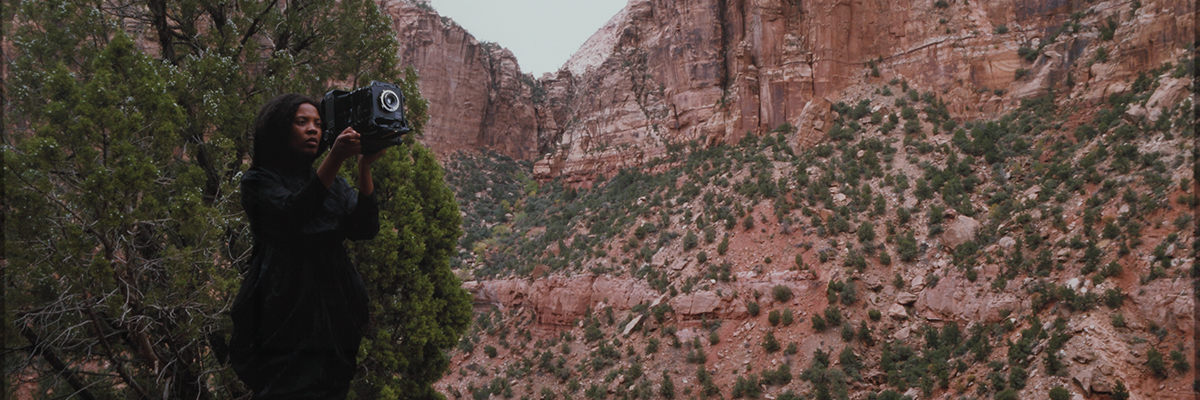
Xaviera Simmons (American, born 1974), 10A Untitled from the Utah series (detail), 2010, dye coupler print, 30 × 40 inches, purchase with David C. Driskell African American Art Acquisition Fund, 2010.21. © Xaviera Simmons.
Since the first decades of the medium’s existence, women photographers have used the camera to construct their identities, shape their persona, and market their creativity. In the 1970s, photographic self-portraiture emerged strongly as a key strategy for women artists who wanted to disrupt the structures and stereotypes of gender. From Cindy Sherman’s dress-up Hollywood shots to Judy Dater’s nude selfies in the desert and Nancy Floyd’s picture-a-day habit (baggy jeans and frizzy hair be damned!), using one’s body as the material for one’s art was a powerful way of asserting selfhood and blowing up conventional, mass-media representations of femininity. This generation of artists also paved the way for the current one, focused on gender and sexuality and their complicated intersections with race and ethnicity. Adopting many of these photographic strategies of self-portraiture and performance to their own ends, artists such as Myra Greene, Lorna Simpson, Martine Syms, and Carrie Mae Weems articulate the conditions and experiences of Black feminine identity. Meanwhile, through Zanele Muholi’s photographs, we are reminded that the category of “woman” is itself a social construct, one that potentially encompasses or excludes nonbinary, nonconforming, queer, and trans individuals.
-
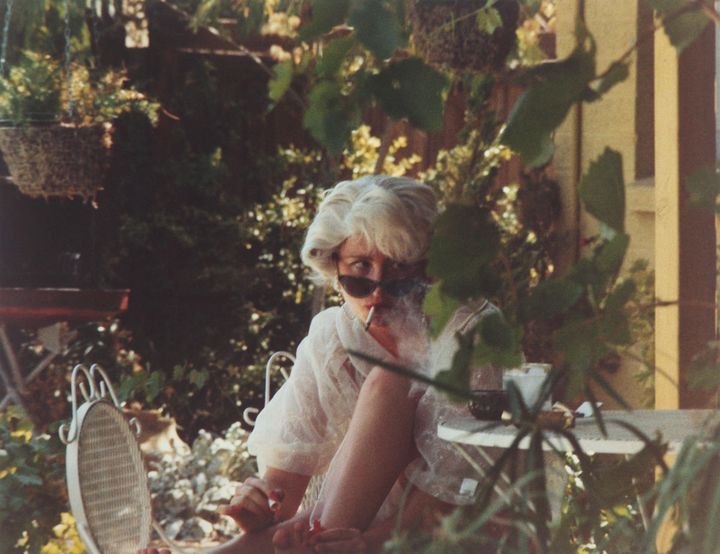
Cindy Sherman has used self-portraiture as a strategy to interrogate representations of identity, gender, and mass culture. In her breakout series Untitled Film Stills, she photographed herself in varied guises inspired by generic Hollywood depictions of female characters: the bereft housewife, the sultry vamp, the wide-eyed ingénue. She challenges traditional understandings of photography and self-portraiture and exposes mass media’s constructed norms and ideas about femininity. Although she shot the original series in black and white as a nod to mid-twentieth-century B-grade black-and-white films, she also reprised the themes in color works like this one.
Untitled, from the Untitled Film Stills series
Cindy Sherman, American, born 1954
1979, printed 1989
Dye coupler print
18 1/16 × 23 3/16 inches
Gift of Lucinda W. Bunnen for the Bunnen Collection
1995.98.8 -
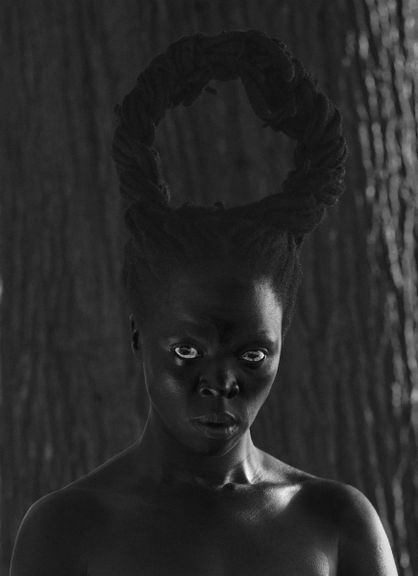
Visual activist Zanele Muholi, whose personal gender pronoun is they, uses self-portraiture to address the politics of gender and race in the ongoing body of work Somnyama Ngonyama (which translates to “Hail, The Dark Lioness” from their mother tongue, Zulu). Muholi poses in locations around the world and incorporates everyday found objects such as props, costumes, and set dressing to build images that draw on their personal family history, consumer culture, and art history. In this photograph, Muholi addresses the viewer with a forceful, piercing gaze, challenging the conventional exoticized, othered, and sexualized depictions of Black female bodies.
Zibuyile I (Syracuse)
Zanele Muholi, South African, born 1972
2015
Gelatin silver print
23 5/8 × 17 inches
Purchase with funds from the Donald and Marilyn Keough Family and the H. B. and Doris Massey Charitable Trust
2017.300 -
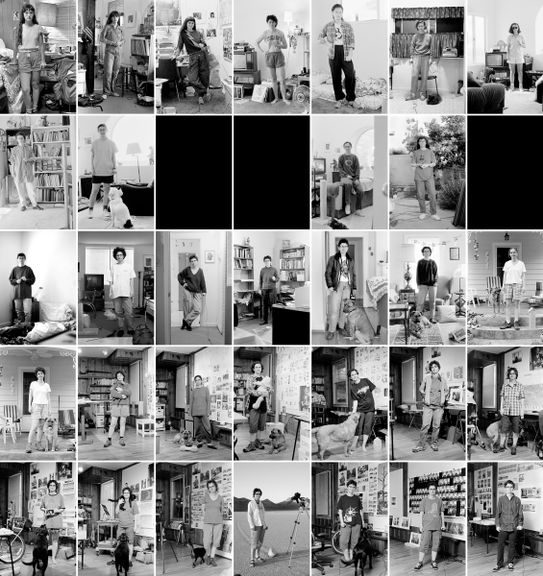
Nancy Floyd has taken a self-portrait nearly every day for over thirty years. Since 1982 when she began the project, named Weathering Time, she has used a roll of film as a visual record of each month. The resulting images slowly reveal changes in Floyd’s appearance during her life as well as shifts in her family dynamic—people come and go, grow old and die. This selection includes some of the artist’s favorite photographs made over a thirty-five-year span. The black rectangles represent the occasional lapses in her near-daily practice of self-portraiture.
Thirty-five Years 1982–2016
Nancy Floyd, American, born 1956
2016
Inkjet print
51 × 48 inches
Purchase with funds from Lucinda W. Bunnen for the Bunnen Collection
2021.89 -
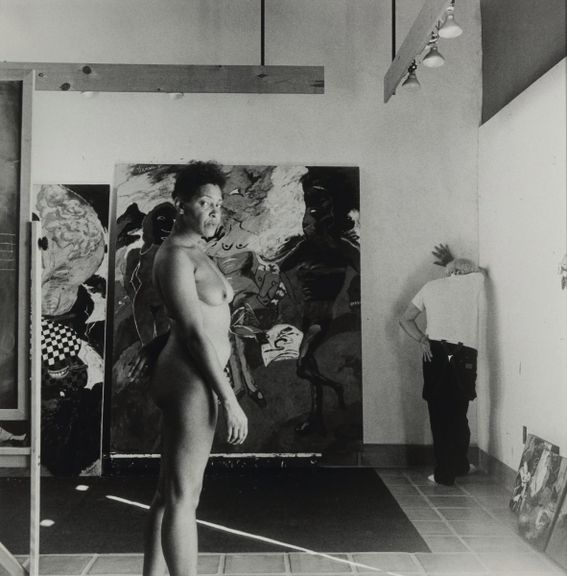
Carrie Mae Weems creates powerful, moving works that interrogate the intertwining of race, gender, sexuality, and politics. This picture is from a 1996 collaboration with painter Robert Colescott. In most of the pictures from this series, an unclothed Weems is tucked into the corner, performing the historically passive role of female models while the painter and his work occupy the center of the image. Here, however, Weems reverses the power dynamic by claiming center stage, standing tall, coolly regarding the viewer as the painter retreats to the corner, hiding his face. For Weems, the piece reveals how both the artist and the model are caught (or framed) within art history’s exclusionary set of values and hierarchies.
Untitled, from the Framed by Modernism series
Carrie Mae Weems, American, born 1953
1996
Gelatin silver print
19 1/2 × 19 1/4 inches
Gift of The National Millennium Survey organized by The College of Santa Fe and the Museum of Photographic Arts, San Diego
2005.183 -
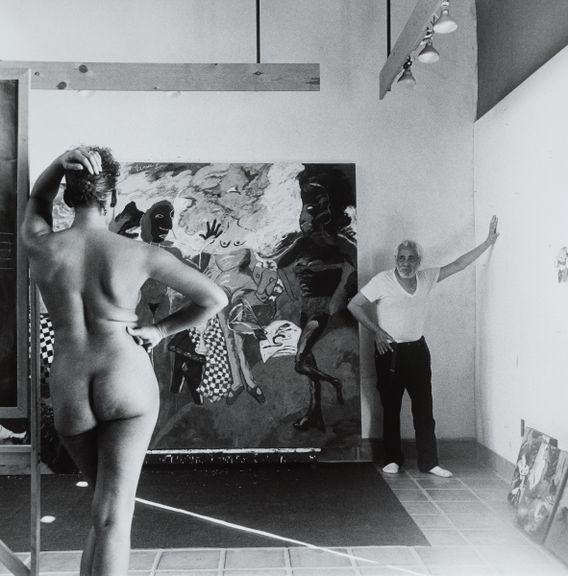
Untitled, from the Framed by Modernism series
Carrie Mae Weems, American, born 1953
1996
Gelatin silver print
19 1/2 × 19 1/4 inches
Gift of The National Millennium Survey organized by The College of Santa Fe and the Museum of Photographic Arts, San Diego
2005.184 -
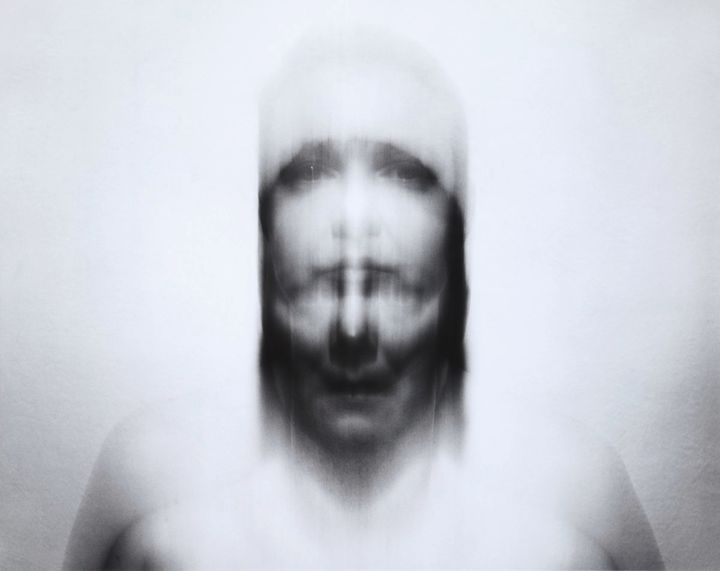
Across drawing, painting, and photography, conceptual artist Blythe Bohnen explores the relationship between gesture, bodily movement, and mark making. In this series of self-portraits, Bohnen performed small head movements in front of the camera and used an extended exposure time to create blurred, overlapping images that transform her face into haunting, evanescent layers. In the process, she destabilizes the conventional relationship between portraiture, photography, and identity.
Vertical Motion Up, Medium
Blythe Bohnen, American, born 1940
1983
Gelatin silver print
14 13/16 × 18 7/8 inches
Gift of Herbert and Walter Molner
1991.314 -
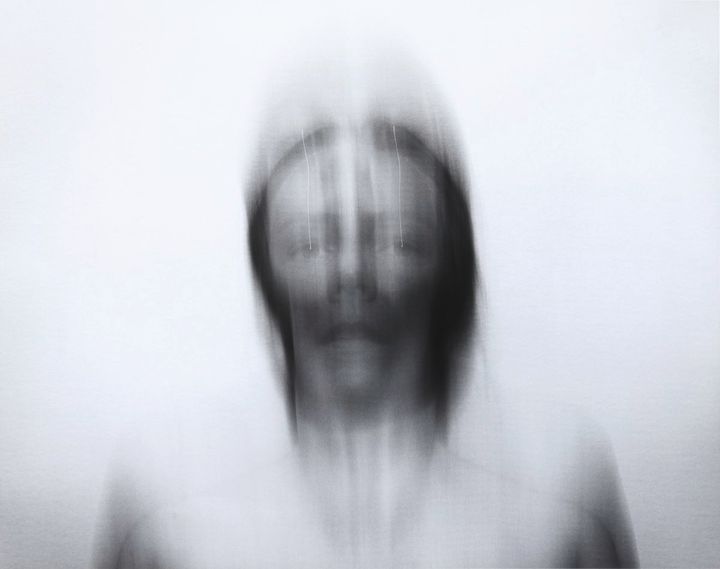
Vertical Motion Down, Medium
Blythe Bohnen, American, born 1940
1974
Gelatin silver print
14 13/16 × 18 7/8 inches
Gift of Herbert and Walter Molner
1991.315 -
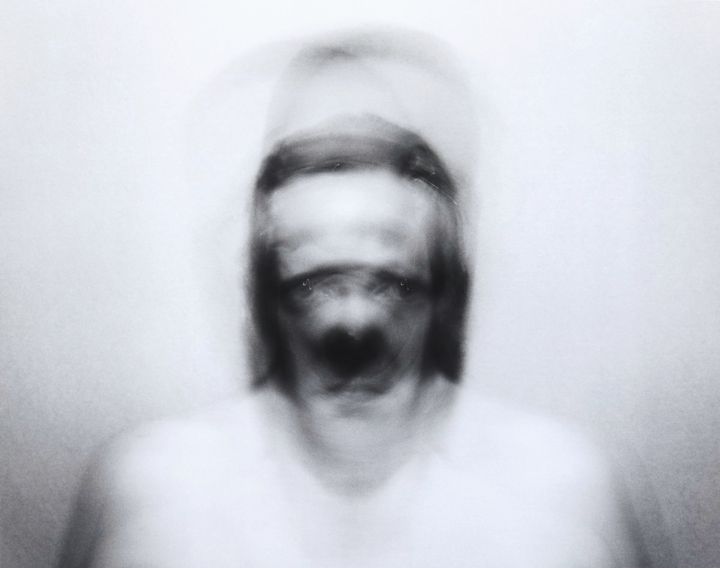
Vertical Motion Up, Medium; Pivotal Motion, Medium
Blythe Bohnen, American, born 1940
1983
Gelatin silver print
14 13/16 × 18 7/8 inches
Gift of Herbert and Walter Molner
1991.316 -
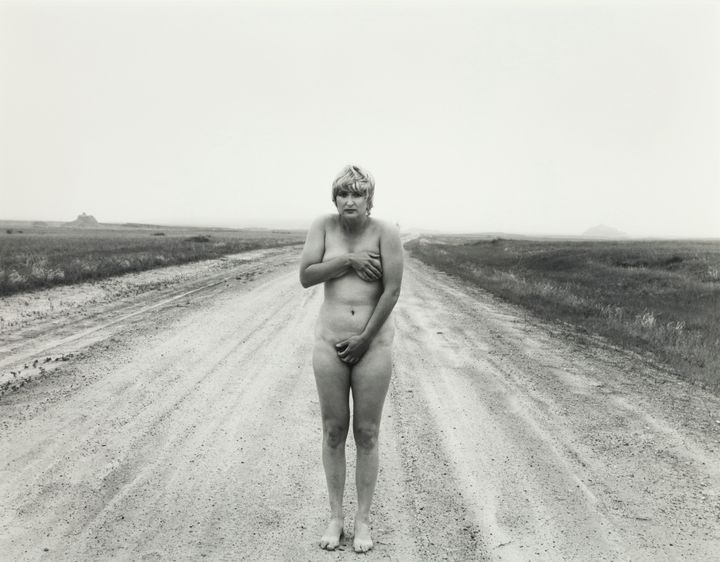
Over the course of her career, Judy Dater has primarily photographed women, including herself. This work is from a series she made during ten trips to national parks in the West between 1980 and 1983, where she photographed herself nude amidst the grandeur of nature. Seemingly stranded on an empty, endless road, she appears vulnerable and lost, but across the larger series, her photographs veer from savage self-examination to carefully constructed performances that explore identity, subjectivity, and femininity. One of the key influences on Dater’s photography is the work of Imogen Cunningham, who was also a close friend.
Self-Portrait on Deserted Road
Judy Dater, American, born 1941
1982
Gelatin silver print
14 1/4 × 18 1/4 inches
Gift of Lucinda W. Bunnen for the Bunnen Collection
1982.274 -
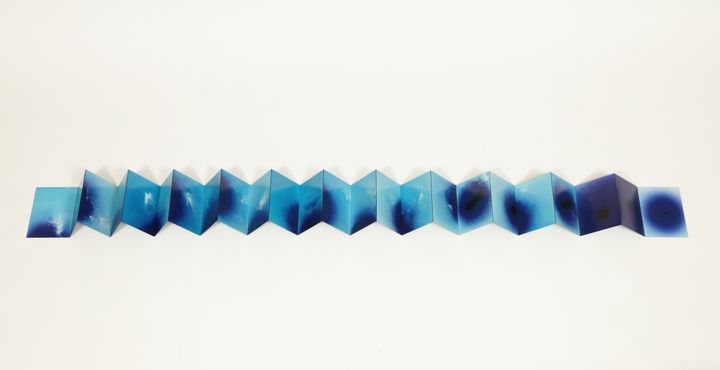
Riepenhoff compels another physical yet transient force, breath, to leave a direct mark on her prints. She explains, “The word Eluvium describes residual deposits of soil and sand produced by wind. To create these images, I cast sand on sheets of light-sensitive paper in the dark. I then spoke, sang, cried, and otherwise generated breath in almost touching proximity to the paper, my actions moving the sand into formations. I exposed and processed the paper, titling each image after what I said or did to create it.”
Eluvium
Meghann Riepenhoff, American, born 1979
2012
Pigmented inkjet prints in book form
6 1/2 × 5 1/4 inches
Gift of Cameron McCord
2013.429 -
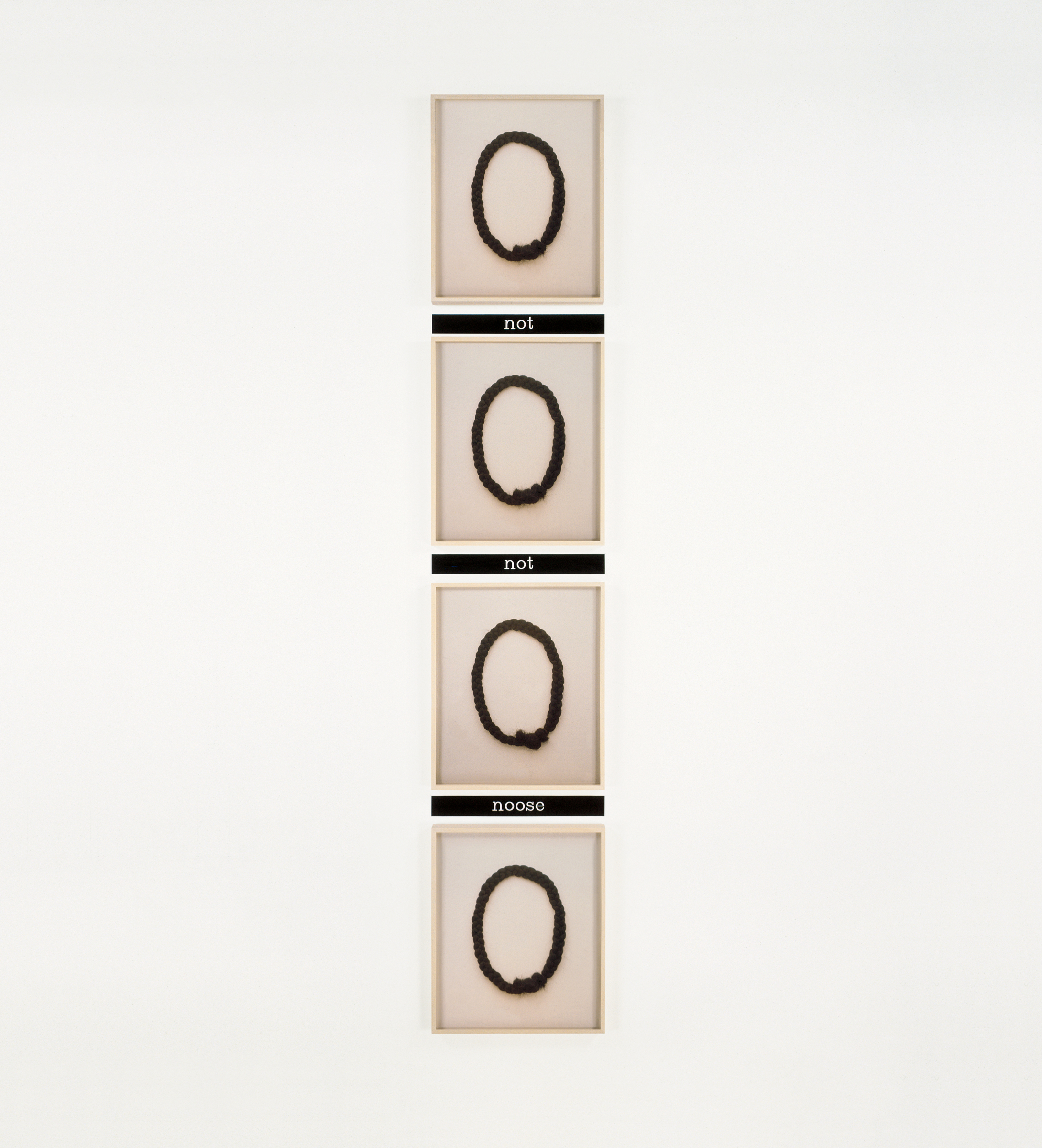
Conceptual artist Lorna Simpson’s work derives its gut-punching power from the evocative, allusive, and deeply unsettling combination of words and images. Here, four stacked photographs of a braided hair piece are accompanied by text panels that slide down from “not” to “noose,” along the way invoking related words (including “knot”) to effect a devastating slippage between the loop of the hair and the loop of a noose. The title Double Negative refers not only to the repeated negative phrases (“not”) but also to the double and entwined burdens of racism and sexism that Black women endure.
Double Negative
Lorna Simpson, American, born 1960
1990
Four dye diffusion color Polaroid prints and three plastic plaques
Each print: 23 7/8 × 19 5/8 inches
Purchase with funds from the National Endowment for the Arts and Edith G. and Philip A. Rhodes
1990.69 a-g -
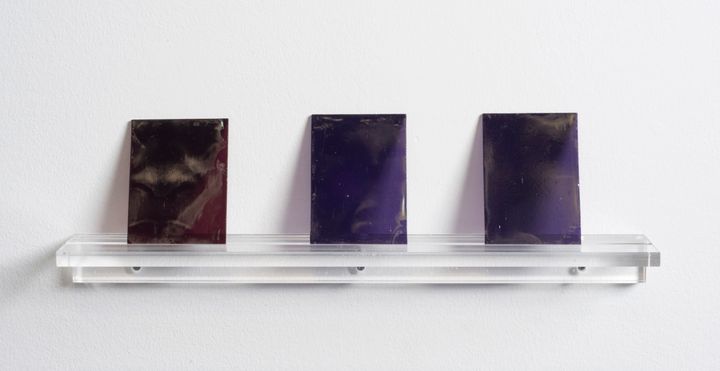
Atlanta-based artist and professor Myra Greene explores race, identity, and history and frequently uses her body in her multimedia practice. In this work from her Undertone series, she explores the perception of color as an analogue for race. To make this piece, she used the ambrotype process, in which light-sensitive chemicals are poured onto a sheet of glass, then exposed in a camera and usually placed against a dark backing so that the negative image appears positive. Greene, however, made her negatives directly on sheets of glass tinted with colors extracted from the hues of varying shades of dark skin. The work, which changes according to light, viewing angle, and context, suggests the instability and illegibility of socially constructed categories of color, skin tone, and race.
Undertone #57, #48, #59
Myra Greene, American, born 1975
2017–2018
Stained glass ambrotype
Purchase with funds from the Donald and Marilyn Keough Family Foundation, Charles Jing, and and Alan and Jewett Rothschild
2021.313 -
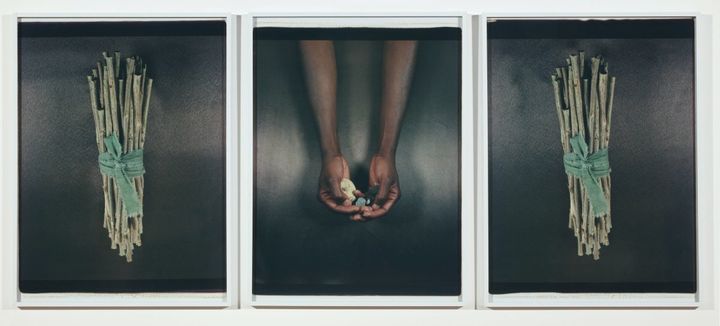
Afro-Cuban artist Magdalena Campos-Pons meditates on the histories of enslavement and globalization that have shaped the Caribbean and her own identity. She created this triptych after visiting Gorée, a small island off the coast of Dakar, Senegal, known for its role in the transatlantic slave trade. Photographing her outstretched hands holding small items she found on the island alongside gathered bundles of sticks, Campos-Pons memorializes this history and connects the labor of her body to those of her ancestors who were forced from Nigeria to Cuba as enslaved laborers in the sugar industry.
Island Treasures
María Magdalena Campos-Pons, American, born Cuba, 1959
2005
Dye diffusion transfer prints
24 × 60 inches
Purchase with David C. Driskell African American Art Acquisition Fund
2009.9 a-c -
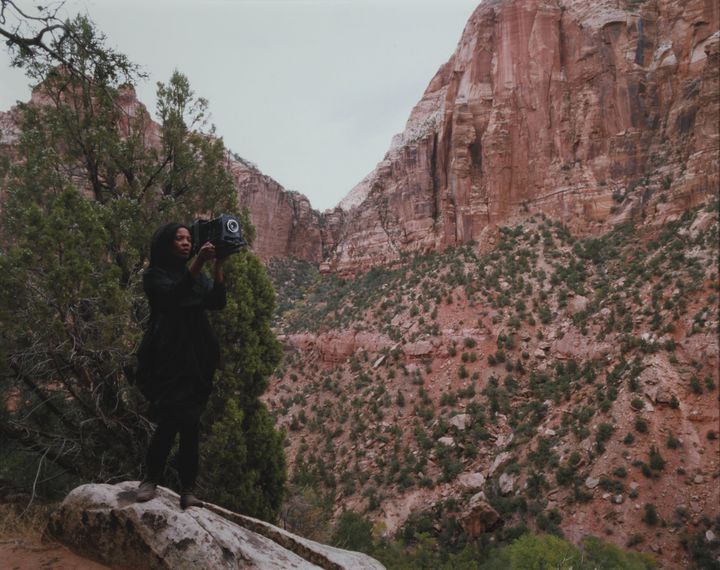
Xaviera Simmons works at the intersection of performance art and photography. For her Utah series, she staged herself as different figures trekking through the state’s rugged and wild terrain. The works recall iconic images of the westward expansion in early photography and landscape painting of the 1800s, when artists began to explore America’s frontier. In these photographs, she places herself directly into this artistic and historic legacy—an active participant in the documentation of grand vistas surrounding her, with a large-format camera in hand—thus drawing attention to the overlooked and undervalued roles of African Americans in that narrative.
10A Untitled from the Utah series
Xaviera Simmons, American, born 1974
2010
Dye coupler print
30 × 40 inches
Purchase with David C. Driskell African American Art Acquisition Fund
2010.21 -
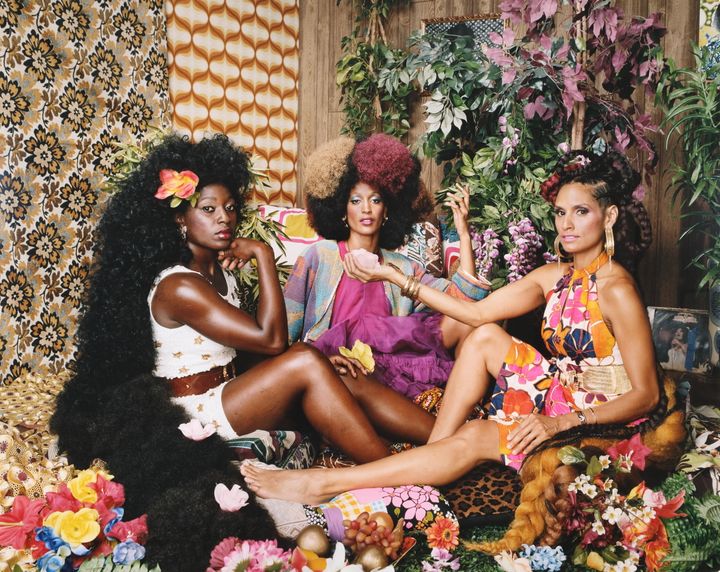
Mickalene Thomas creates vibrantly layered artworks that reclaim iconic images to center Black female subjectivity in the history of art. A direct response to Edouard Manet’s Luncheon on the Grass, this photograph transposes the scene of three White figures having a picnic in a park to an interior view of three exquisitely coiffed and adorned Black women (including Thomas’s partner at right) gazing directly and confidently at the viewer. The colorful, wood-paneled living room, complete with fake plants and mismatched African textiles, evokes Thomas’s 1970s childhood and the aesthetics of Blaxploitation cinema, known for its audacious, dangerous, and sexually confident gun-toting heroines.
Les Trois Femmes Deux
Mickalene Thomas, American, born 1971
2018
Dye coupler print
48 × 60 inches
Purchase with funds from the Friends of Photography
2018.214